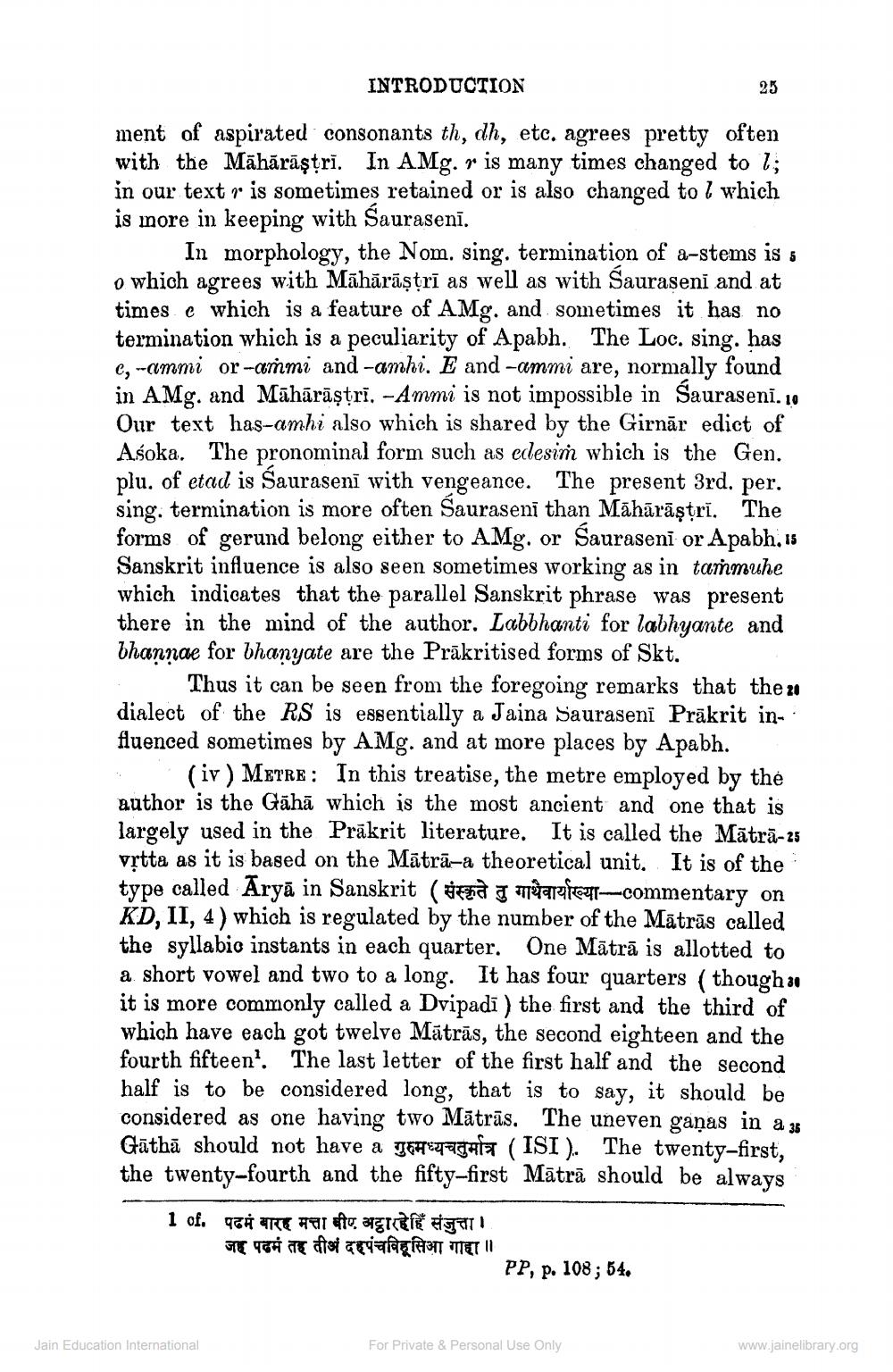________________
INTRODUCTION
ment of aspirated consonants th, dh, etc. agrees pretty often with the Māhārāştri. In AMg.r is many times changed to l; in our text r is sometimes retained or is also changed to l which is more in keeping with Saurasenī.
In morphology, the Nom. sing. termination of a-stems is : o which agrees with Māhārāștrī as well as with Sauraseni and at times e which is a feature of AMg. and sometimes it has no termination which is a peculiarity of Apabh. The Loc. sing. has C, --ammi or-armi and -amhi. E and -ammi are, normally found in AMg. and Māhārāştri. -Ammi is not impossible in Saurasenī. 10 Our text has-amhi also which is shared by the Girnār edict of Asoka. The pronominal form such as edesim which is the Gen. plu, of etad is Saurasenī with vengeance. The present 3rd. per. sing. termination is more often Sauraseni than Māhārāştri. The forms of gerund belong either to AMg. or Sauraseni or Apabh.is Sanskrit influence is also seen sometimes working as in tammuhe which indicates that the parallel Sanskrit phrase was present there in the mind of the author. Labbhanti for labhyante and bhannae for bhanyate are the Prākritised forms of Skt.
Thus it can be seen from the foregoing remarks that the z dialect of the RS is essentially a Jaina Sauraseni Prākrit in- : fluenced sometimes by AMg. and at more places by Apabh. . (iv) METRE: In this treatise, the metre employed by the author is the Gāhā which is the most ancient and one that is
y used in the Prākrit literature. It is called the Mātrā-25 vrtta as it is based on the Mātrā-a theoretical unit. It is of the type called Aryā in Sanskrit ( na marie-commentary on KD, II, 4 which is regulated by the number of the Mātrās called the syllabio instants in each quarter. One Mātrā is allotted to a short vowel and two to a long. It has four quarters ( though so it is more commonly called a Dvipadī) the first and the third of which have each got twelve Mātrās, the second eighteen and the fourth fifteen! The last letter of the first half and the second half is to be considered long, that is to say, it should be considered as one having two Mātrās. The uneven gaņas in a 3 Gāthī should not have a J6779#f=T (ISI). The twenty-first, the twenty-fourth and the fifty-first Mātrā should be always
1 of. GÅ TE HELT STENS HETTI जह पढमं तह तीअं दहपंचविहूसिआ गाहा ।।
PP, p. 108; 54.
Jain Education International
For Private & Personal Use Only
www.jainelibrary.org




